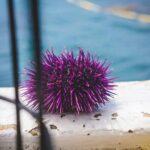This Fungus Is Capable of Solving Problems and Recognizing Shapes

Fungi, often relegated to the shadows of biological study, typically conjure images of mushrooms sprouting on forest floors or mold creeping across forgotten bread. However, recent research has unveiled capabilities in a seemingly unassuming fungus that might just reshape our understanding of intelligence in the natural world.
Phanerochaete velutina, a common wood-decaying fungus, is demonstrating that even organisms without a brain can engage in sophisticated behaviors like problem-solving and shape recognition. This discovery challenges the very foundations of how we define and perceive intelligence.
How can a brainless fungus perform tasks that we thought were reserved for animals with complex nervous systems? The answers, emerging from meticulous studies in Japan, promise to not only intrigue but also illuminate the mysterious and capable world of fungal life.
Phanerochaete Velutina: A Master of Transformation
https://www.youtube.com/watch?v=k0amPEOcKtM
Most people walk through the forest and see trees, leaves, maybe a squirrel or two. But beneath their feet, hidden in the shadows of fallen logs, there’s a quiet force at work—Phanerochaete velutina.
You might not have heard of it, but this unassuming fungus plays a crucial role in keeping ecosystems alive. It doesn’t just break things down; it transforms decay into renewal, turning dead wood into nutrients that fuel the forest’s next chapter. Without it, nature’s cycle would stall, and life as we know it would struggle to move forward.
At its core, Phanerochaete velutina is a master of adaptation. Its mycelium, a vast underground network of microscopic filaments, doesn’t just absorb nutrients—it communicates. It spreads, connects, and responds to its environment with precision, ensuring the forest floor stays balanced and thriving.
And here’s where it gets interesting.
Scientists are discovering that the enzymes this fungus produces might hold solutions for industries far beyond the forest—think biofuels, waste cleanup, and sustainable materials. Nature has been perfecting this process for millions of years, and we’re only just beginning to catch up.
But maybe the most powerful lesson isn’t in what Phanerochaete velutina does—it’s in how it does it.
It doesn’t resist change. It works with it. It turns obstacles into opportunities, decay into growth.
And maybe that’s a reminder we all need.
The Test That Uncovered a Fungus’s Hidden Intelligence
Image Source: Shutterstock
The experimental setup involved small blocks of wood already colonized by Phanerochaete velutina. These blocks were strategically placed in two distinct patterns: a circle and a cross. This design was chosen to test the fungus’s response to different spatial distributions of resources, simulating scenarios that might naturally occur in its woodland habitats. For each configuration, the researchers closely monitored how the mycelium, the fungus’s thread-like network, extended from each block.
The spread of the mycelium was documented over several weeks, with particular attention to how the networks interconnected among the blocks and how they expanded outward from the initial points of growth. The circle arrangement aimed to observe if the fungus would prioritize expanding towards the outer edges, avoiding the empty center presumed to be resource-poor. In contrast, the cross arrangement was intended to test if the fungus would extend its mycelium towards the extremities of the cross, potentially optimizing its reach for resources thought to be more abundant at these points.
Key to the experiment was the documentation process, which involved regular photographic captures to record the progression of mycelial growth and the changes in its network structure over time. This data was crucial for analyzing patterns in the fungus’s behavior, providing insights into its decision-making process.
What Scientists Discovered About a Fungus’s Hidden Intelligence
Image source from: Fungal Ecology Volume 72, December 2024, 101387
The results from Tohoku University’s experiment were more than just interesting—they challenged how we think about intelligence itself. Phanerochaete velutina didn’t just grow; it responded, adapted, and optimized its strategy based on the environment.
The Circle Test: Avoiding Wasted Effort
When placed in a circular pattern, the fungus intentionally avoided the center, a region with no wood to colonize. Instead, it spread outward, prioritizing areas where resources were available. It was as if the fungus “knew” where the energy was best spent, refusing to waste effort on an empty space.
The Cross Test: Strategic Expansion
In the cross-shaped setup, the fungus took an even bolder approach. It extended directly toward the farthest blocks, forming dense, well-connected networks. This wasn’t random—it was a deliberate, targeted growth that allowed it to reach and utilize resources more efficiently.
But here’s where it gets even more fascinating.
Once the mycelium established connections between blocks, it began reorganizing itself, strengthening key pathways and retracting unnecessary ones—an optimization process that mirrors problem-solving in more complex organisms.
The most striking discovery? The fungus wasn’t just reacting; it was communicating across its network, adjusting its strategy in real-time based on environmental feedback. Scientists believe biochemical signals within the mycelium guide these decisions, allowing it
Rethinking Intelligence: What a Fungus Can Teach Us
 Image source: Pexels
Image source: Pexels
The discovery that Phanerochaete velutina can recognize patterns, adapt, and solve problems challenges our understanding of intelligence. We’ve long believed that cognitive abilities require a brain, a nervous system, or at least some form of centralized control. But this fungus operates differently. It processes environmental information, adjusts its behavior, and optimizes its growth—all without neurons or conscious thought.
This forces us to reconsider what intelligence really means. Maybe it’s not just about thinking, but about adapting. About making choices, even at the smallest levels of life. Phanerochaete velutina doesn’t react randomly; it assesses its surroundings and makes strategic decisions to survive. If a simple fungus can do this, how many other organisms might possess hidden intelligence we’ve overlooked?
New Frontiers in Biology and Ecology
Understanding these abilities could have profound effects on biology and ecology. Fungi are already essential to life on Earth, breaking down organic matter, cycling nutrients, and forming symbiotic relationships with plants. But now, we see them as more than just decomposers—they are active problem solvers, shaping ecosystems in ways we’re only beginning to understand.
Beyond nature, this research has the potential to influence biotechnology and even computing. The enzymes produced by Phanerochaete velutina during wood decay are valuable for biofuels and waste management. If we learn how fungi optimize these processes, we could develop more efficient and sustainable industrial applications. Some scientists are even exploring fungal networks as a basis for bio-based computing, using their ability to process and transmit information in ways similar to neural networks.
But perhaps the most significant impact of this discovery isn’t technological—it’s philosophical. Intelligence is no longer just a human trait or an animal characteristic. It exists in different forms throughout the natural world, operating on principles we don’t yet fully understand. Phanerochaete velutina teaches us that intelligence isn’t limited to the brain—it’s woven into life itself. And maybe it’s time to start paying closer attention.
Expanding the Boundaries of Intelligence
As we uncover the unexpected cognitive abilities of Phanerochaete velutina, one thing becomes clear—intelligence isn’t limited to brains, neurons, or conscious thought. This fungus, with its ability to recognize patterns and adapt its growth, challenges our deepest assumptions about problem-solving and decision-making in nature. It forces us to ask: is intelligence something we’ve been defining too narrowly? And if so, what else are we missing?
These findings reach far beyond fungi. They open doors for breakthroughs in science, from biotechnology and environmental sustainability to bio-inspired computing. More importantly, they push us to rethink the very nature of intelligence—shifting away from a human-centered perspective and toward a more expansive understanding of cognition itself. Life, in all its forms, may be far more aware, more interconnected, and more adaptive than we’ve ever realized.
But perhaps the biggest takeaway is this: intelligence isn’t just about thinking. It’s about responding. It’s about adapting. It’s about working with the world, not against it. And if a simple fungus can teach us that, maybe it’s time we start listening to the lessons nature has been showing us all along.
Featured Image Source: Shutterstock
Loading...








